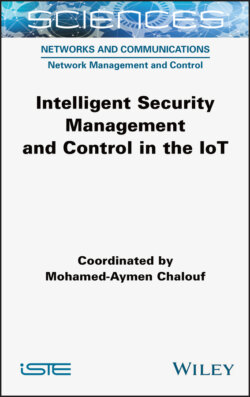Читать книгу Intelligent Security Management and Control in the IoT - Mohamed-Aymen Chalouf - Страница 11
1.1. Introduction
ОглавлениеCognitive radio networks (CRN) and the Internet of Things (IoT) are concepts that are taking on more and more importance in modern communication systems. The IoT extends connectivity to the real world (Atzori et al. 2010; Perera et al. 2014, 2015; Xu et al. 2014; Al-Fuqaha et al. 2015), by allowing an object (a sensor, smartphone, car, etc.) to interact with the existing internet infrastructure, to communicate with other objects and to collect and exchange data. An object can have several interfaces and so detect different access networks. When several access networks are available, it will be necessary to make a decision about selecting the access network best adapted to the current situation. However, with the increase in the number of connected objects, the spectrum is becoming a precious resource, one threatened with scarcity. Faced with this problem, we can imagine objects with cognitive capacities (Vlacheas et al. 2013). This will make it possible to optimize use of unoccupied radio frequencies while still minimizing interferences with priority users. In an intelligent radio environment (Haykin 2005; Akyildiz et al. 2006), we distinguish two types of users: priority users, called primary users, who have an exclusive right over some of the spectrum, and secondary users, also called cognitive users, who have “opportunistic” access to the spectrum. The main functions of intelligent radio are spectrum detection, decision-making, spectrum sharing and spectrum mobility. There is a great deal of research focusing on IoT architectures based on intelligent radio (Shah et al. 2013; Vlacheas et al. 2013; Aijaz and Aghvami 2015; Khan et al. 2016), which has demonstrated the need to integrate intelligent radio into the IoT (Wu et al. 2014a).
In this chapter, we tackle the question of making a decision for effective access to an access network or radio channel in the IoT. To communicate, an object that has several interfaces and/or cognitive capacities can detect numerous access networks or radio channels. In this case, it is necessary to choose the access network or radio channel best adapted to the communication in question. Among those aspects that might be considered in this decision, we might find Quality of Service (QoS) constraints on the IoT application and the object’s own energy constraints (Zhu et al. 2015; Shaikh et al. 2017). Thus, the decision-making module should be multicriteria and consider the dynamic context of the radio environment, the needs of the application in terms of QoS and the object’s own energy constraints.
The remainder of the chapter is organized as follows. Sections 1.2 and 1.3 give an overview of recent work on managing vertical handover and spectrum handoff, respectively, in an IoT context. In section 1.4, we suggest a multicriteria decision-making module that makes it possible to select and adapt radio transmission perimeters in order to satisfy the QoS requirements of the transported data equally as well as the energy constraints of the communicating objects. The suggested module will be used equally as much where heterogenous networks co-exist as in the context of intelligent radio. The choice of access network (presence of several heterogenous networks) or radio channels (use of intelligent radio) depends on the number of types of contextual information such as the networks state, user preferences, the application constraints and the characteristics of the object. To evaluate the suggested decision-making module, we consider the domain of Vehicular Ad-hoc NETworks (VANETs) and examine two possible situations: with and without intelligent radio.
